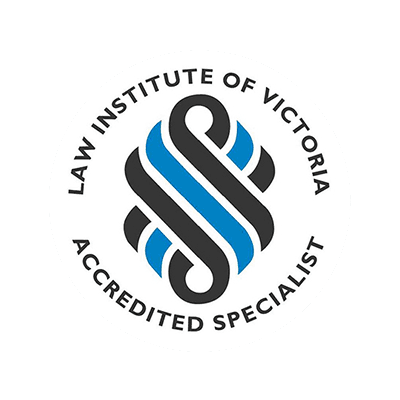Liability for transferring property from an individual to a company
DOES A TRANSFER FROM AN INDIVIDUAL TO A COMPANY WHOSE SOLE BENEFICIARY IS THE SAME INDIVIDUAL ATTRACT IMPOSITION OF DUTY?
Section 7(1) (a) Duties Act 2000 (“Act”) states that duty is imposed on a transfer of dutiable property. The Act defines the term dutiable property under section 10(1) (a) (i) to include an estate in fee-simple.
The Act defines in Section 3 that a transfer includes amongst other things a conveyance. Given these provisions of the Act, it seems more than likely that a transfer of the kind contemplated above constitutes a transfer of dutiable property, which would be liable for the imposition of duty. The important question remains whether there are any exemptions contained in the Act that deem such a transfer non-dutiable.
On a preliminary examination of section 35 of the Act, it may provide the above transferor with some assistance. Section 35 of the Act states:
“(1) No duty is chargeable under this Chapter in respect of a transfer of dutiable property (other than marketable securities) that is made by the transferor to a trustee or nominee to be held solely as trustee or nominee of the transferor without any change in the beneficial ownership of the dutiable property or made by way of re-transfer to the transferor.
(2) A reference in sub-section (1) to a change in beneficial ownership of dutiable property does not include a reference to the creation of a trustee's right of indemnity from the property.”
This section replicates Exemption (18) Heading VI (B) of the Third Schedule of the Stamps Act 1958 (Vic), the predecessor of the Duties Act 2000 which provides an exemption for:
“Any instrument for the conveyance of real property which is made by the transferor to a trustee or nominee to be held solely as trustee or nominee of the transferor without any change in the beneficial ownership or made by way of re-transfer to such a transferor.”
Given that Section 35 is a relatively new section, there is no specific case law currently available on the limits and interpretation of this section. However, as the section replicates the repealed Exemption 18 of the Stamps Act 1958 (Vic) it would be beneficial to examine its case law.
It seems that a transfer of the type contemplated above may fit within the wording of the exemption. The exemption specifies a transfer to a trustee or nominee. Therefore, if the company were to fall within the definition of trustee or a nominee than on the face of it the transfer would seem to be exempt of duty. However, given the case law this is not the case.
The reasoning lies in the examination and interpretation of the term beneficial ownership and what constitutes a “change of beneficial ownership”. These words have been highly litigated in revenue law and are the reason why all transfers to companies and most transfers to trustees do not meet the exemption.
Although the available case law examines this question for the standpoint of a trustee, its examination is still pertinent.
There is much case law on the limits of the words “change in beneficial ownership” however, the different interpretation may be categorised into two schools of thought:
1 The broad view is that a change beneficial ownership occurs on a mere subjection of free property to the terms of a trust even though the beneficial owner remains the same both before and after the creation of the trust:
Grollo Homes Pty Ltd v Comptroller of Stamps (VIC) 82 ATC 4514
2 The narrower view is that a change in beneficial ownership must involve something more than a mere subjection of property to a trust but rather requires an actual vesting of property in a person other than the existing beneficial owner.
The narrower view appears to be supported by the decision in Comptroller of Stamps v Yellowco Five Pty Ltd 93 ATC 4025 . The Full Court of the Supreme Court held in this case that the exemption made three severable requirements of the conveyance, which is effected by the instrument:
- That the conveyance effected by the instrument must be a conveyance of the property to a trustee or nominee.
- That the property conveyed is to be held solely as trustee or nominee of the transferor.
- That the property conveyed is to be held without any change in beneficial ownership.
The Court considered that the words “to be held solely as trustee…without any change in beneficial ownership” imported an element of futurity into the exemption. This meant that, if it were possible at the time of transfer for the property to be held in the future other than on terms solely for the benefit of the beneficiaries, as they existed immediately before the transfer, the threshold test for Exemption 18 would not be met.
Ultimately, it was held that whilst upon execution of an instrument of conveyance or transfer, the sole beneficiary under the receiving trust may be the transferor, the possibility of future additions or changes in beneficiaries will affect the applicability of the exemption.
Therefore, on interpretation of both the broad and narrow view of the exemption it would seem that a transfer from an individual to a company would never fall within the exemption. This is because beneficial ownership in a company structure can easily be changed and by its very nature could not meet the requirement of futurity implicit in the third requirement of Yellowco (i.e. shareholders could be added or subtracted if the need arose).
In terms of trust structures, the interpretation of the case law and the recent Revenue Ruling SD 101 stipulates that the Commissioner will refuse its applications where the trustee had unrestricted power of sale because the exemption presumes that there will ultimately be a re-transfer of the property to the original owner. The Commissioner would also refuse applications to a discretionary trust because the trustee has the discretion to transfer the property other than to the transferor.
The only trust structure that will meet the requirements of the exemption is a bare trust in favour of the transferor and under which the trustee holds the property without any interest in it.
The transfer between an individual and a company whose sole beneficiary is the same individual will attract stamp duty. The only structure where a stamp duty liability may be avoided is where the property is transferred to a bare trust for the individual and the trustee holds the property without any interest in it.
NEED MORE INFORMATION
Behan Legal assists and advises on these important issues. For an appointment, call 03 9646 0344.


